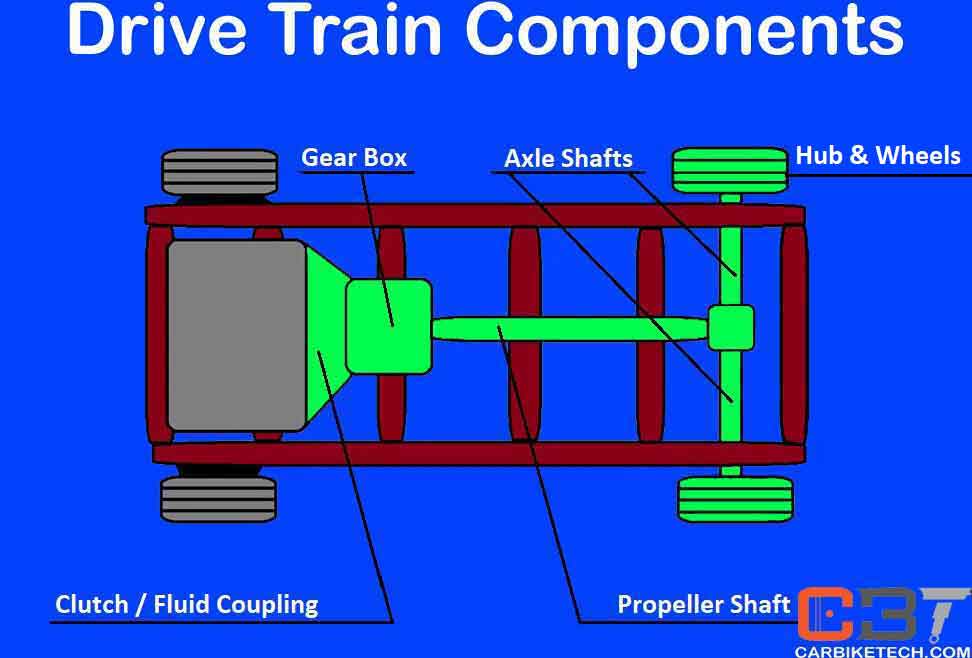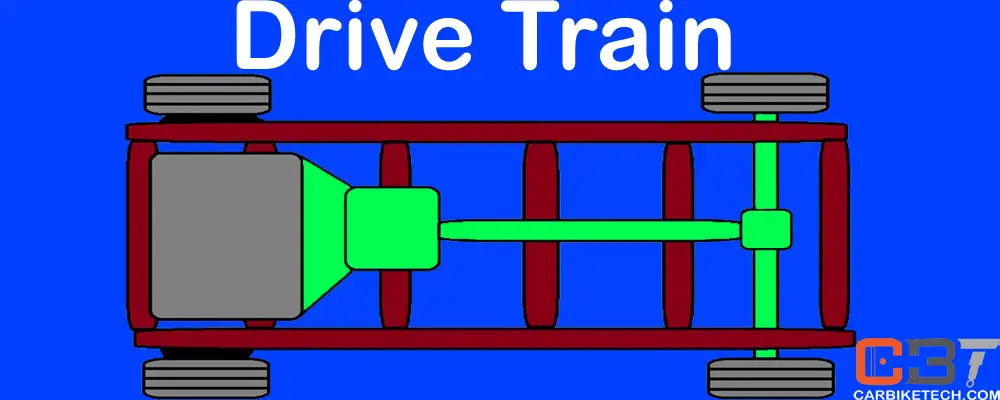What is a Drive Train or Drive Line?
The term ‘DRIVE TRAIN” refers to every mechanical part after the engine that needs to propel the vehicle. i.e., the clutch or fluid coupling/torque converter, transmission, overdrive unit, transfer case, the driveshafts, universal joints, differential, axle, axle shafts or half shafts, CV joints if present, hubs, and wheels. A Drive Train or Drive Line consists of all the parts except for the steering column. The drive train is the set of motor vehicle components that deliver power to the drive wheels. However, it excludes the engine or motor that generates the power.
Furthermore, transmission refers to the whole drivetrain in British English, while it’s only a set of gears when named in American English. So, the equipment converts energy into the vehicle’s movement. The usage can vary from manufacturer to manufacturer when they describe warranty coverage.
In these cases, the “terms” mean whatever the manufacturers’ lawyers say it means. They choose what to include and cover in the warranty and what to exclude.
Drive Train is an assembly of multiple components that work together to deliver power to the automobile. It starts with the engine, which generates the power, and ends at the wheels where it delivers this power. However, proper usage of the term Powertrain means all the mechanical parts needed to make the car move, including the engine, but not its accessories. And generally, it excludes wheels and tires. However, the term Drivetrain includes all those parts but not the engine. The drivetrain is everything after the engine that works to propel the vehicle. However, the Powertrain is all of those plus the engine and related engine components.

What Does It Do?
The vehicle’s transmission & drive train transmits the engine power to the wheels. It provides for the multiplication of engine torque or twisting force to accelerate the vehicle from a stop or carrying heavy loads in the case of trucks. Besides, the system allows for engine speed reduction during cruising speeds to save fuel and reduce noise.
The critical components of the Drive Train include a gearbox or transmission or trans-axle, a transfer case in case of 4-wheel drive vehicles, a propeller shaft to drive the rear axle, and driveshafts to drive the wheels. Besides, it also has a clutch for manual shift and a torque convertor for automatic shift gearbox.
Function of the Drive Train:
The function of the drivetrain is to couple the engine that produces the power to the driving wheels that use this mechanical power to rotate the axle. This connection involves physically linking the two components, which may be at opposite ends of the vehicle. And thus, it requires a long propeller shaft or drive shaft. The operating speeds of the engine and wheels are also different. Therefore, manufacturers must match the correct gear ratio. The ideal engine speed must remain approximately constant for efficient operation as the vehicle speed changes. So, manufacturers must also change the gearbox ratio manually, automatically, or automatically by an automatic continuous variation.
How Does A Drive Line Work?
Most times, manufacturers make the drive train of the engine and transmission. Sometimes they include the differential also. The engine produces a circular motion from the firing of the spark plugs. It makes the pistons move around a lobed shaft, causing it to rotate. This shaft then connects via a torque converter or a clutch mechanism. Thus, it allows ether fluid hydraulic transfer of energy or throws mechanical friction plates, depending on transmission type. The transmission then relays its power to the drive shaft. Then, the Drive Train passes on the drive further.
Watch How The Drive Train Works Here:
Once the power reaches the differential, it converts this power into a right-angled rotation. Then, this makes the axle move forwards to push or pull the vehicle forward. There are slight variations to this, but it is how power flows to the wheels.
Most vehicle manufacturers such as Mercedes Benz, BMW, Audi, Toyota, Honda, and many manufacturers have their in-house teams to design the drive train themselves. They do not outsource this job as it is a critical part of vehicle design.
